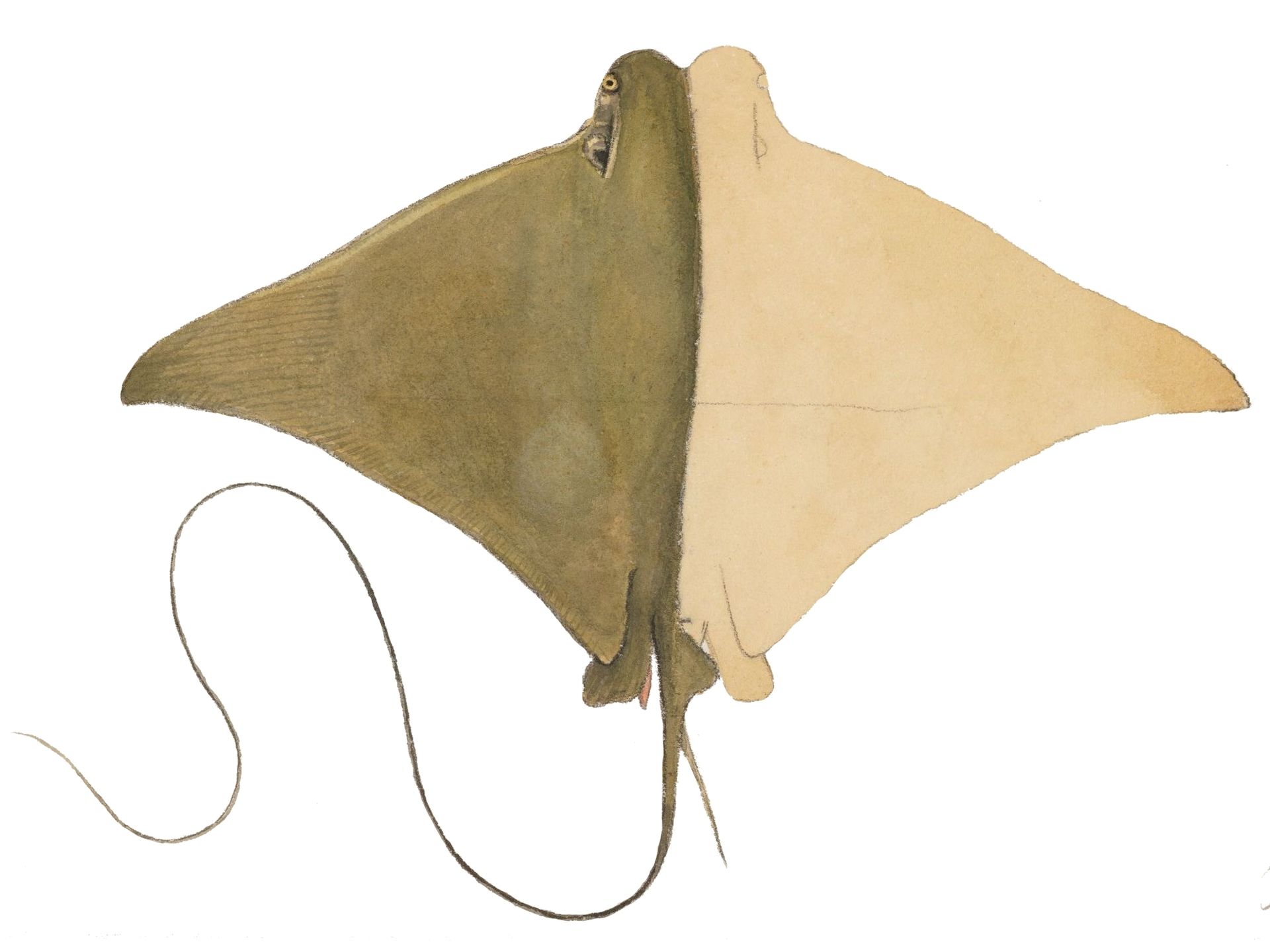Brazilian cownose rays and Gulf kingfish, not usually seen north of the Gulf of Mexico, are now apparently swimming just off the New Jersey beaches, according to a new study from scientists at Rockefeller University in New York.
Two years of water sampling at Barnegat Inlet, N.J., from spring 2017 to spring 2019 turned up genetic material – distinctive DNA from cells sloughed off the slime coatings of fish – that matched the southern species.
The Brazilian rays have never been known outside the Gulf of Mexico, and the Gulf kingfish has been seen as a migrant only as far north as Chesapeake Bay in Virginia, according to the researchers.
Besides being yet another indicator of warm-water fish species appearing farther up the East Coast, the team says the project “demonstrates an accurate, inexpensive way to detect long-predicted marine life range changes.”
The paper, “Improved Environmental DNA Reference Library Detects Overlooked Marine Fishes in New Jersey, United States,” was published the journal Frontiers in Marine Science.
Mark Stoeckle of Rockefeller University headed the study that used seawater samples drawn twice monthly for two years near Barnegat Inlet and inside Barnegat Bay, the shallow lagoon behind barrier beaches. The samples carried fish DNA, which degrades and disperses within a few days of coming off animals but remains despite currents and tides long enough to detect a species' passing presence.
Sample water was filtered to concentrate the DNA for extraction., and target segment of the DNA amplified in a laboratory and then sent for sequencing. Those results, including all the DNA sequences in the sample, were fed into computer software that counts the number of copies of each sequence and searches for matches in an online public reference library.
The team did encounter one Brazilian cownose ray – decayed remains that washed ashore in the sampling area in August 2017 and was positively identified by its DNA.
In 2010, a Census of Marine Life program, called the Future of Marine Animal Populations (FMAP), forecast changes in diversity of marine species based on available habitat and anticipated changes in water temperature.
Jesse Ausubel, director of the Program for the Human Environment at Rockefeller University and co-founder of the marine census program, says the Brazilian cownose ray or Gulf kingfish far north of its known range fits FMAP's prediction. The is also the uncertainty that while rare, the rays and kingfish may have been missed in trawl sampling.
“This study further establishes aquatic environmental DNA (eDNA) as an innovative, inexpensive, low-impact way to monitor marine life migrations, changing ranges, diversity and distribution,” as climate change, pollution and other factors affect ocean life, Ausubel says. Stoeckle suggest DNA sampling could possibly assist in stock assessments.
“Promising work is also underway to confirm a relationship between the concentration of a species' DNA in seawater and the abundance of that species in the water,” according to Stoeckle. “If water samples can provide an index of the number or total weight of fish of a given species in a defined ocean area, that offers a potential leap forward for sustainable fisheries and ocean management, improving the rationality with which fish quotas are set and the quality and reliability of their monitoring around the world.”
Considering the time and expense of trawl surveying, Tony MacDonald of the Urban Coast Institute at Monmouth University, which helped initiate the project, said “eDNA science is granting humanity a very old wish: an easy way to estimate the distribution and abundance of diverse fish species and other forms of aquatic life in the dark waters of rivers, lakes, and seas.”







